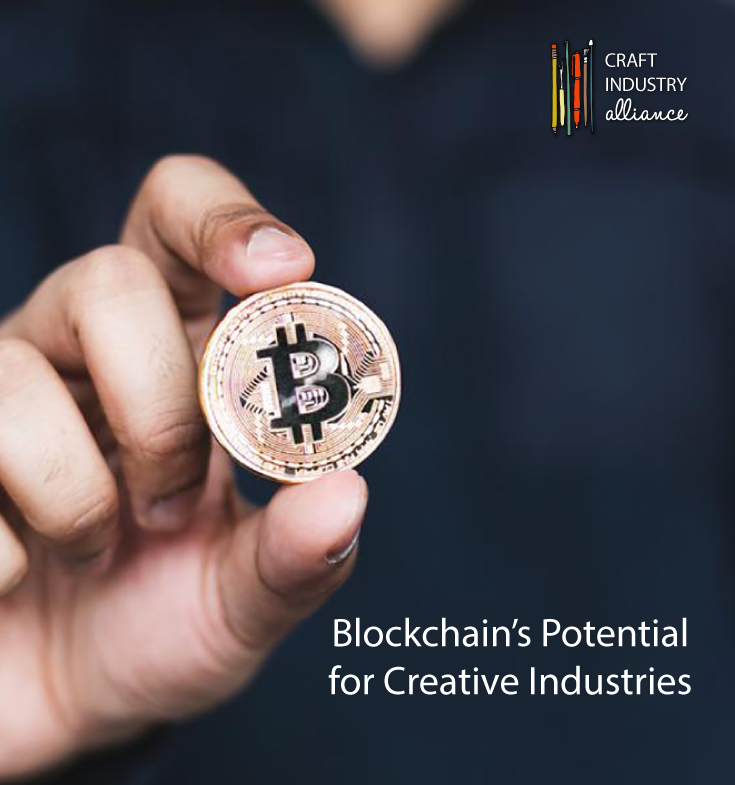
At some point in the past 10 years, you’ve surely heard about Bitcoin or blockchain. These new technologies are being hyped as potential cures for all sorts of problems, but it’s difficult to know whether to believe the hype without knowing what the heck these things even are. Here’s what crafters need to know about blockchain.
Bitcoin and Cryptocurrencies
If you know anything about blockchain, it’s probably Bitcoin and that it exists. This virtual currency was the first application of blockchain technology, as envisioned by the pseudonymous Satoshi Nakamoto in a white paper in 2008.
It was an idealistic proposal for a distributed digital currency in which every participant helps verify transactions that are added to a ledger that is immutable and encrypted. No one person owns or oversees the system, and no one can alter the entries in the ledger.
Technologists had been playing with the idea of digital currencies for a long time but were plagued by one question: How can you trust that people won’t cheat the system? In Nakamoto’s system, every transaction, or block, added to the chain is verified by at least 51% of the participants. And those participants are rewarded with small fractions of Bitcoin for in exchange for the computing power used to solve the cryptographic puzzles that verify the encrypted transactions.
Based on Nakamoto’s concept, only 21 million Bitcoin can ever be created, or “mined” by computers in the system. That scarcity helps gives it value as a currency. Bitcoin had mostly a niche audience at first — mining the currency required quite a bit of tech know-how and a willingness to dedicate a lot of computing power to it.

Millions of people now use cryptocurrency wallets to hold Bitcoin and other coins, but there’s still a high barrier to entry. Other cryptocurrencies started popping up as people copied the open-source concept, but none have been as valuable as Bitcoin. Hype drove the value of Bitcoin up to nearly $20,000 last year; in the past month its value has hovered around $6,300.
In 2013, a man named Vitalik Buterin came up with a concept to expand the possibilities of blockchain. So far, blockchain had only been used as a way to record transactions and store value. But what if these distributed, encrypted ledgers could be used for other things as well? Buterin’s white paper described a way to create decentralized apps. Development for his Ethereum project was fueled by crowdfunding in 2014, a now-common method for drawing interest and capital for new cryptocurrencies called an ICO, for “initial coin offering.” By various measurements, more than half of ICOs in recent years have been scams or failures.
Cryptocurrency enthusiasts would have you believe blockchain technology will completely change every aspect of business as we know it. Financial regulators around the world are warning consumers about the high potential for fraud. The reality is that cryptocurrencies are very volatile, but the underlying blockchain technology has a lot of potential.
What is Blockchain Good For?
While the earliest adopters of Bitcoin and cryptocurrencies were technonerds and fiscal libertarians, in the past two years big business has gotten very interested in blockchain.
The cornerstone of Ethereum and decentralized blockchain apps is the “smart contract.” The users of a blockchain-based app can encode rules that are self-activating or self-enforcing — when certain conditions are met, the program will automatically execute a specified command, or if the conditions are not met, an action will not be allowed.
The smart contract concept is very interesting to various industries, and companies and organizations around the world are working on blockchain-based tools to boost trust and security for their businesses. An obvious target for blockchain technology is the international shipping industry — moving product around the world requires a lot of accounting, verification, and paperwork. Creating a blockchain-based tracking system could potentially speed communication among shippers, buyers, and customs officials, and automate many tasks, saving time and money.
Supply chains are another target for blockchain-based technology. When an auto company makes a car, it gets components from many suppliers, which in turn have their own suppliers, and those suppliers get raw materials from yet other suppliers. Keeping track of those parts’ origins is a difficult task, with each company holding on to proprietary information and making oversight and trust difficult. Enterprise blockchain software could help create trust among business partners and reduce duplicated recordkeeping work.
A Craftier Blockchain
Blockchain’s business applications beyond cryptocurrencies are mostly conceptual at this point. But a startup from Bulgaria is working on creating a blockchain-based handmade marketplace.
TANZO CEO Georgi Manchorov was inspired to create the marketplace by seeing his mother’s difficulties selling her handmade work. Mainstream marketplaces such as eBay, Etsy, and Amazon are filled with mass-produced items and knockoffs that make it difficult to locate quality handmade products.
So with TANZO, only sellers that are verified as real craftspeople will be allowed to sell on the site, and handmade items will be registered on its blockchain to create trust with buyers. Manchorov compared it to De Beers’ diamond tracing system, which is on blockchain. You can read more details about TANZO’s plans in this whitepaper.
People who use TANZO will be rewarded with tokens for their reviews, ratings, and shares. Manchorov’s team is using the Civic blockchain-based identity system in its platform and will be launching its own ICO soon to raise funds for developing the social marketplace.
Manchorov reports TANZO has 4,500 crafters from dozens of countries signed up as sellers already, drawn by the promise of low 1.5% transaction fees. He imagines TANZO as being a hybrid of the Shopify and Etsy models, where sellers have their own branded stores but can also be found via site-wide search. He hopes to have 25,000 crafters on the site by the time it launches.
But my main question is how TANZO will attract enough buyers to keep those sellers happy. It’s hard to compete with Etsy’s captive audience of 33 million shoppers — most crafters will put up with the 5% transaction fee and mass-produced competitors for that number of eyeballs. Manchorov says they’ll use money from the ICO for marketing, and TANZO will rely on sellers spreading the word via their own social media accounts.
Manchorov admits he hadn’t heard of Etsy before he started developing TANZO a year ago. He says he’s not trying to compete with Etsy but sees it as a “platform with all the problems I’m trying to solve.”

Grace Dobush
contributor
Grace Dobush is a Berlin-based freelance journalist and the author of the Crafty Superstar business guides. Grace has written about business and creative entrepreneurship for publications including Fortune, Wired, Quartz, Handelsblatt and The Washington Post.


Oh, wow. Thanks for this report Grace. I am a huge skeptic of all of this. 1) How does one “verify” if they’re “legitimate” or not? Who sets those rules? 2) It doesn’t give me hope for this platform if they didn’t do their market research and have never heard of Etsy.